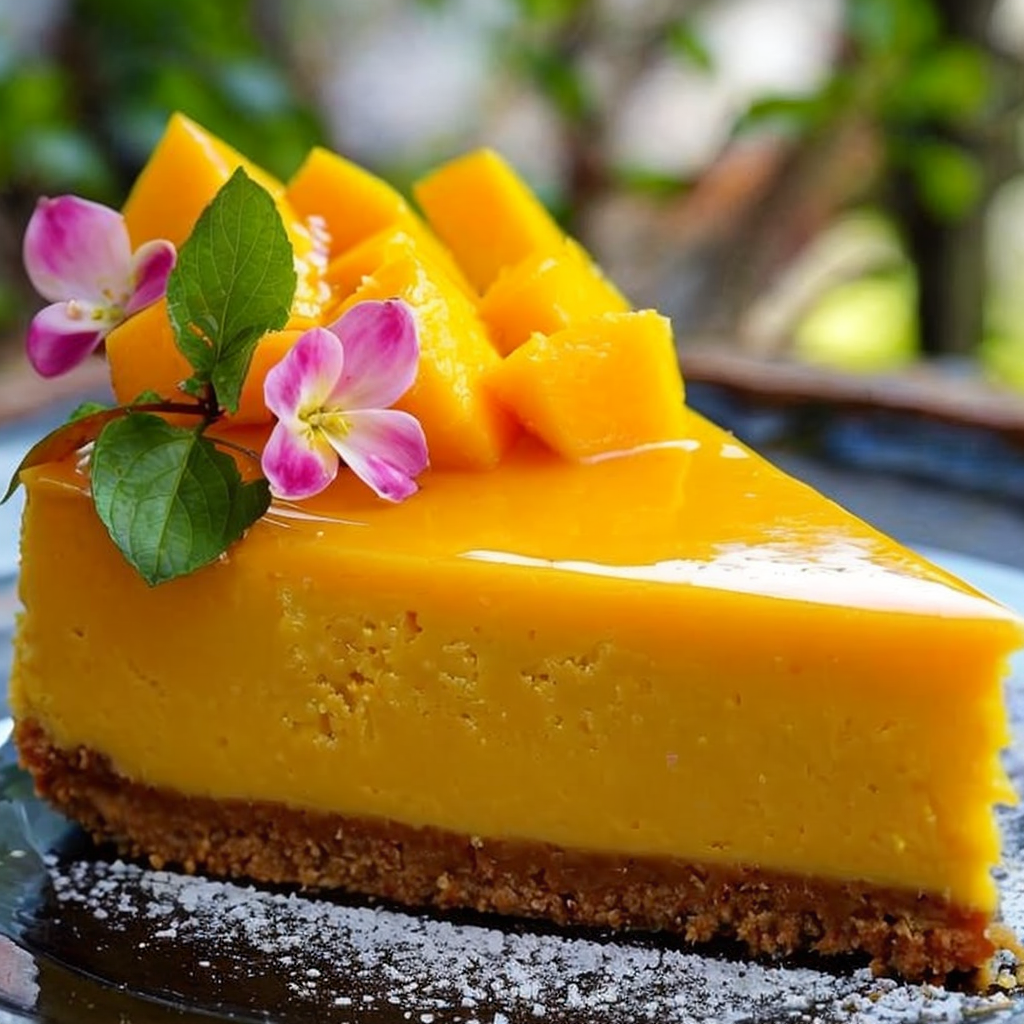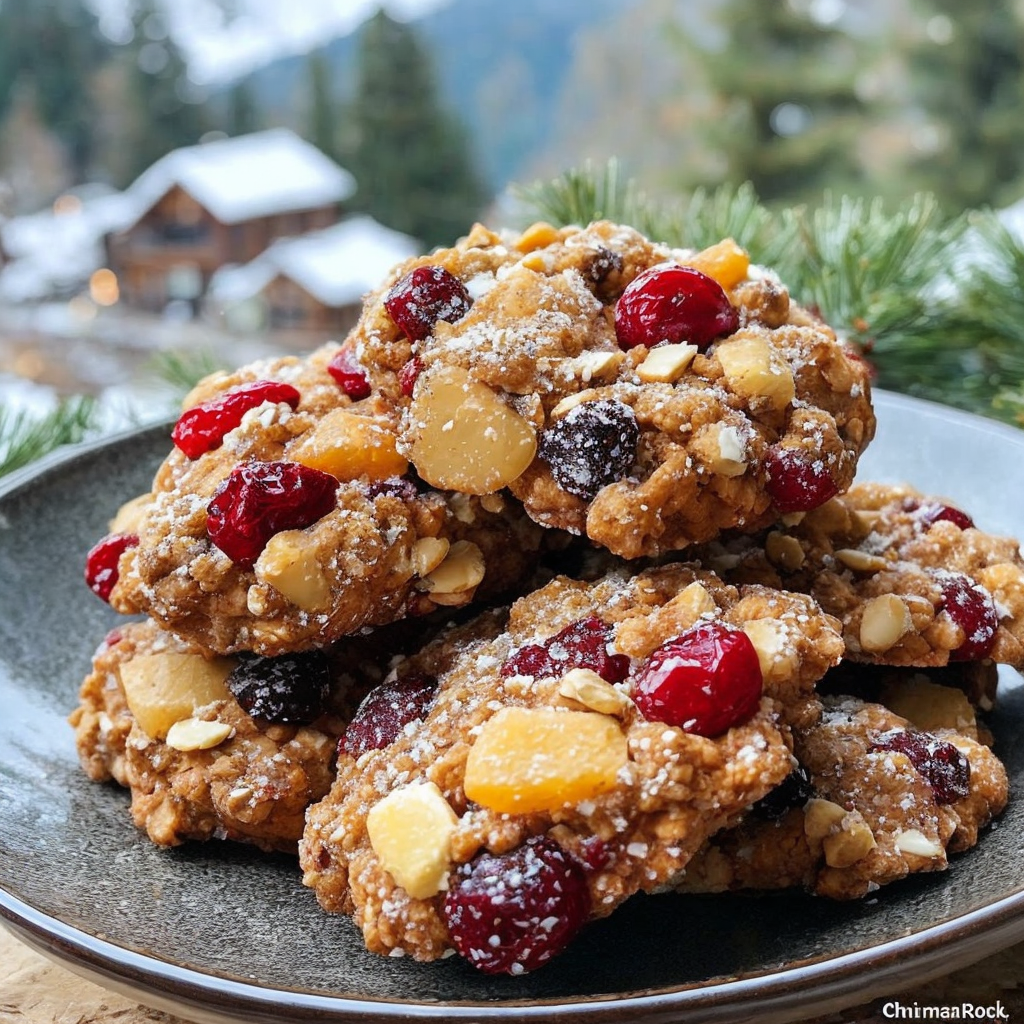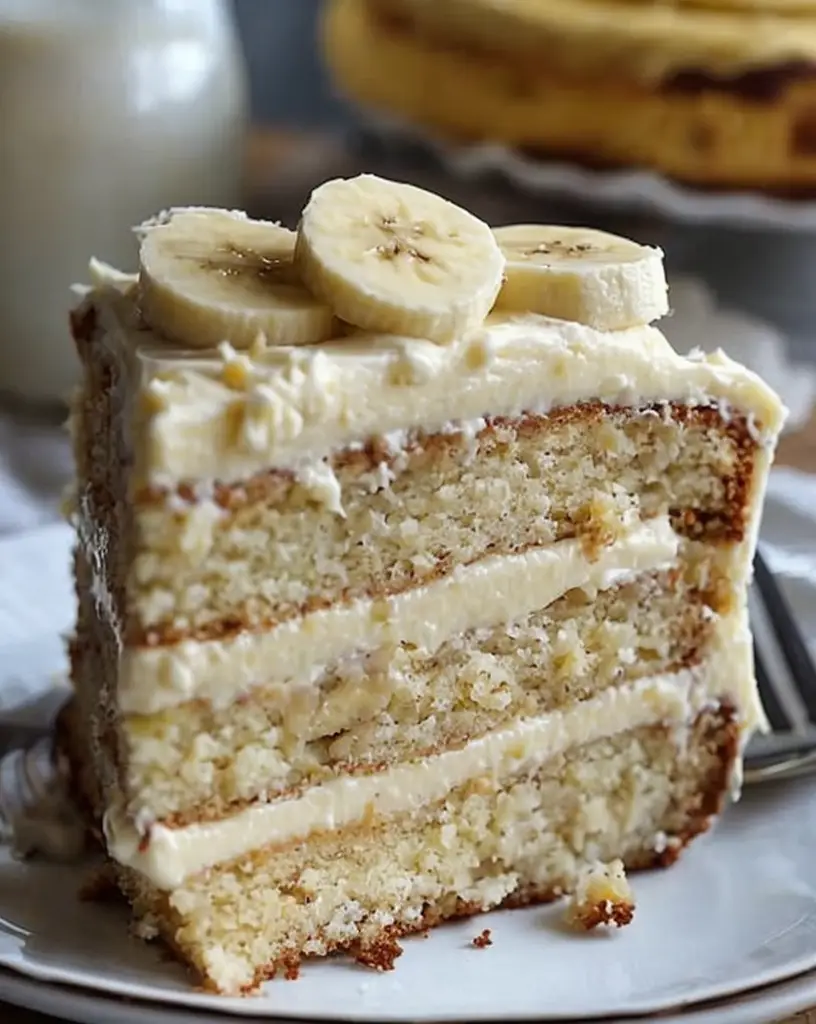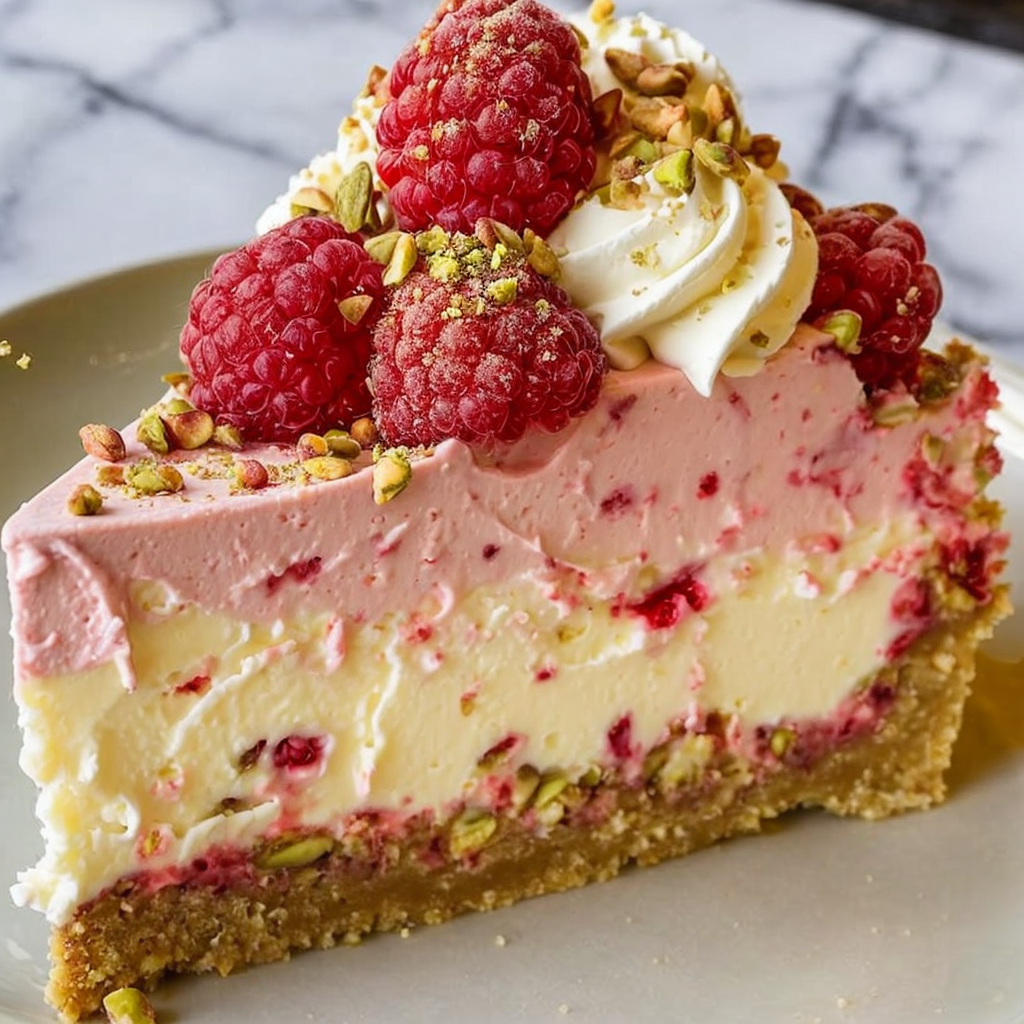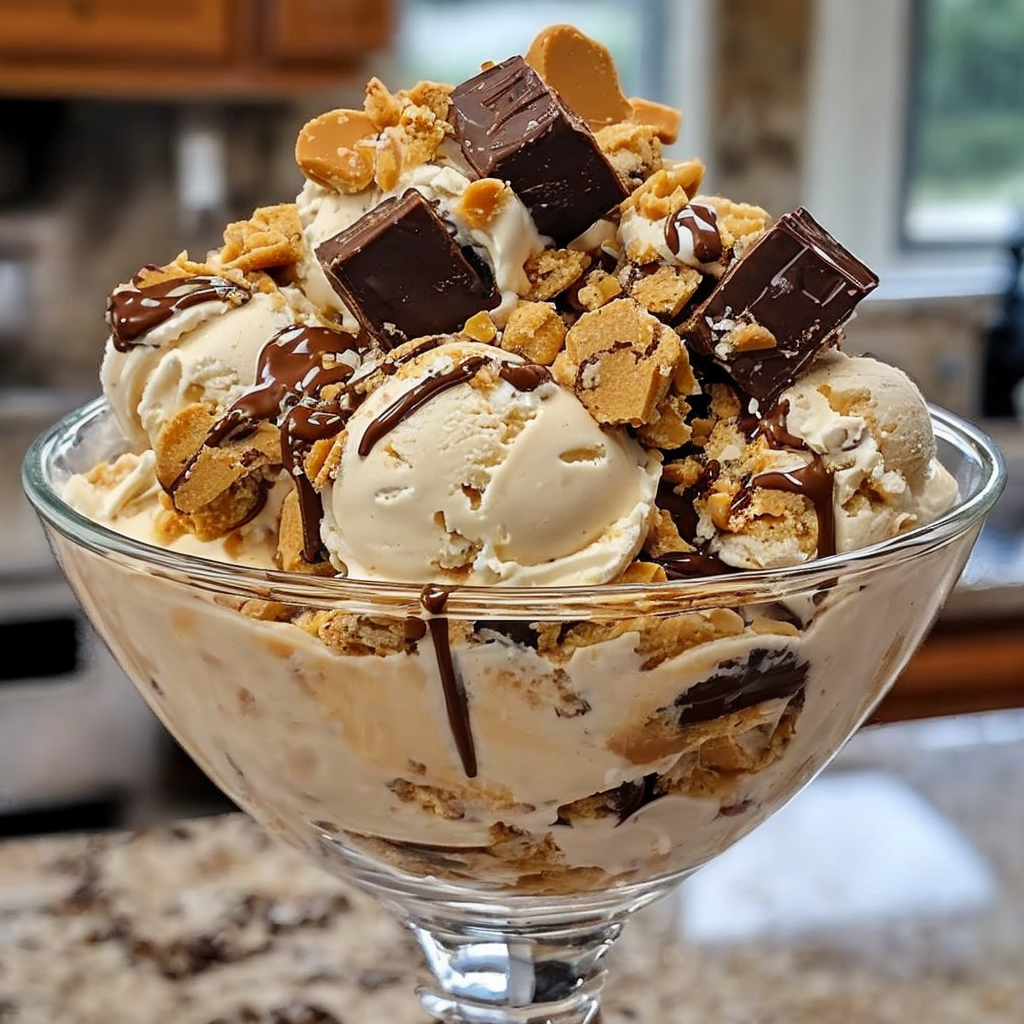No Bake Caramel Crunch Butterfinger Truffles: A Sweet Indulgence
Indulge in the delightful symphony of flavors with our No Bake Caramel Crunch Butterfinger Truffles. These decadent truffles are a perfect blend of rich caramel and crispy butterfinger, wrapped in smooth chocolate. Whether you’re craving something sweet or looking for an easy treat to impress your guests, this no-bake recipe promises satisfaction with every bite.
Crispy, chocolatey, and infused with irresistible caramel, these truffles bring joy in simplicity. Imagine the crunch of butterfinger, paired with the gooey goodness of caramel, each covered in creamy chocolate. The combination makes for a satisfying treat that is hard to resist. Serving as an elegant dessert or a fun party favor, this recipe ensures a sweet surprise in any setting.
Quick Recipe Highlights
- Flavor Profile: The truffles boast a rich caramel base complemented by the crisp, nutty flavor of butterfinger, delivering a sweet and slightly salty experience.
- Texture: Each truffle reveals a delightful combination of creamy, crunchy, and silky textures that melt smoothly in your mouth.
- Aroma: Expect an enticing bouquet of sweet caramel mingling with chocolate notes, perfect to tantalize your senses.
- Visual Appeal: These truffles present beautifully with their glossy chocolate coating and a sprinkle of butterfinger crumbs for a dash of allure.
- Skill Level Needed: Simple enough for novices but satisfying for the seasoned cook, requiring basic know-how of truffle forming techniques.
- Special Equipment: The recipe primarily requires a mixing bowl, baking sheet, and optional food processor for exact butterfinger crumb consistency.
Recipe Overview
- Difficulty Level: Ideal for beginners, this recipe requires no oven and features straightforward, easy-to-follow instructions perfect for any experience level.
- Category: This delightful treat fits the dessert category, suitable for various dining occasions from casual gatherings to festive celebrations.
- Cuisine: A classic indulgence with a twist, it integrates traditional American candy bars into a modern confection.
- Cost: With affordable ingredients, this recipe is budget-friendly, transforming everyday candies into gourmet treats.
- Season: Perfect year-round, these truffles are versatile, whether enjoyed cozying up in winter or as a summer treat.
- Occasion: Ideal for parties, holiday treats, or gifting, these truffles add a touch of sweetness to any event.
Why You’ll Love This Recipe
These No Bake Caramel Crunch Butterfinger Truffles are a delectable harmony of taste and texture. They embody the mouthwatering combination of crunch from the butterfinger and the smoothness of chocolate, all complemented by the rich, buttery notes of caramel. Designed to impress both sight and palates, these truffles tempt with their allure and delight with every bite, making them a favorite for any sweet tooth.
The beauty of this recipe lies in its convenience. These no-bake truffles save time and effort, requiring only simple mixing and shaping steps. Perfect for spontaneous cravings or last-minute dessert planning, you’ll appreciate how quickly they come together without sacrificing flavor. Prepared in less than half an hour, they are a go-to solution when time is limited.
Packed with indulgent sweetness, these truffles make moderate consumption a delight while offering balanced nutrients for a dessert option. The inherent energy boost from their sugary and buttery ingredients makes them perfect for a quick pick-me-up. Their portion-controlled size helps manage intake as well, aligning with a reviewed nutritional lifestyle.
Socially, these truffles shine in gatherings. Easy to share and enjoy by guests, their universal appeal bridges diverse palates. Their bite-sized nature makes them excellent for parties, allowing guests to savor a sweet moment alongside other finger foods. As a conversation starter, they’ll have guests asking for tips or variants, engaging everyone over the shared delight.
In terms of cost, transforming common candy into gourmet truffles makes these as budget-friendly as they are delicious. Using widely available ingredients, this recipe proves that luxury can indeed be affordable. They remind us that sophistication in food doesn’t require a hefty price tag; it merely takes creativity and a little kitchen savvy to elevate the ordinary.
Historical Background and Cultural Significance
The truffle, historically rooted in European confectionery traditions, represents indulgence and luxury. Originating from French cuisine, truffles have evolved from simple ganache-coated spheres to extravagant creations featuring an array of flavors, textures, and coatings. This particular iteration, blending caramel and Butterfinger, pays homage to the rich candy heritage of America, integrating beloved modern sweets into classical forms.
Culturally, truffles have maintained their allure as symbols of elegance in the culinary world. They frequently appear in gourmet chocolate assortments and luxury brand offerings. Their connection to celebration and gifting ties to centuries-old traditions of exchanging sweets during festive occasions or special moments, marking them as tokens of affection or indulgence.
The evolution of truffles has been fascinating. From classic cocoa-dusted ganache balls to extravagant fillings and coatings, each variation showcases creativity and innovation. Our recipe leverages this evolution by incorporating Butterfinger, a distinctly American candy, adding a delightful crunch to the traditional smoothness of truffles and signaling a beautiful fusion of old and new.
In terms of regional variations, each culture flaunts its unique version of truffles by infusing local flavors and ingredients. Some countries prefer dark chocolate bases while others lean towards milk chocolate. This recipe introduces a unique twist by infusing Butterfinger, making it a distinctly American take on a classic European treat, delighting chocolate and candy lovers alike.
Ingredient Deep Dive
Butterfinger adds a distinctive taste and texture to any confection. Its crispy, flaky interior enhances the truffles by adding a satisfying crunch that contrasts the soft caramel and chocolate layers. Introduced in 1923, Butterfinger has since become an iconic American candy, recognized for its unique taste blending peanuts and corn syrup into a flaky, sweet filling topped with chocolate.
Nutritionally, Butterfinger contributes to the truffle’s energy content with its sugar and fat profile, adding a delightful indulgence. When selecting Butterfinger for this recipe, opt for fresh, intact bars with vibrant packaging signaling quality preservation. Store them in a cool, dry place to maintain their characteristic crispness and flavor until usage.
Caramel is essential in these truffles, providing a creamy, buttery depth that melds harmoniously with the chocolate and Butterfinger. Caramel’s rich history dates back thousands of years to when people first began transforming sugar into a silky, golden syrup. This versatile confection has since been adopted across cultures, used widely in both savory and sweet dishes.
Caramel’s nutritional benefit lies primarily in its energy-providing sugars. When choosing caramel, opt for smooth, golden varieties with a balanced sweetness. Store caramel at room temperature, sealed properly, to prevent hardening or crystallization. In recipes, softer forms like sauces can easily substitute for harder caramel pieces for a smoother truffle filling.
Common Mistakes to Avoid
- Over-mixing ingredients can create overly dense truffles, losing the desired airy, light texture. Mix just until combined.
- Using poor-quality chocolate diminishes taste, making it imperative to invest in good chocolate, ideally couverture, for a smoother, silkier finish.
- Insufficient chilling time means truffles may not set correctly, leading to misshapen results. Respect all chilling guidelines for optimal shape.
- Over-processing Butterfinger bars will transform their texture, making it important to pulse gently to retain the essential crunch.
- Improperly melting chocolate can cause seizing. Melt slowly using a double boiler or intervals in a microwave to avoid burning.
- Neglecting the coating stage results in uneven layers; roll truffles thoroughly in chocolate until completely covered.
- Skipping ingredient preparation causes delays. Prepare all elements beforehand for efficient assembly and execution.
- Lack of storage care impacts shelf life. Store truffles in cool, airtight conditions to preserve freshness and texture.
- Failing to measure ingredients correctly affects proportions and taste. Ensure precise measurements for consistency in flavor and structure.
- Rushing the process may cause errors. Take time with each step for successful results that reflect your effort and attention.
Essential Techniques
Melting chocolate correctly is vital. Poor melting can result in gritty, uneven coatings, affecting truffle presentation. Always use gentle heat and stir frequently until just melted for smooth results without burning or seizing. A double boiler or microwave in short bursts are excellent methods to maintain chocolate’s quality.
Mastering caramel is essential. A poorly prepared caramel can seize or taste burnt, disrupting flavor balance. Heat sugars slowly and stir gently to achieve the desired golden browns associated with perfectly balanced caramel. Visual cues like color and consistency are crucial indicators of success.
Consistency in portioning ensures evenly sized truffles. Use a teaspoon or truffle scoop for consistent, manageable portions, leading to even coating and predictable setting times. This also supports uniform presentation when serving guests or showcasing as gifts.
Understanding texture balance is crucial. An over-chilled base or overheated coating sets truffles too rapidly, impacting texture and appearance. Constantly monitor all elements’ temperatures, ensuring they’ve balanced properly before proceeding with the next steps.
Following proper layering techniques delivers flavor complexity. Alternately adding layers of chocolate and Butterfinger enhances flavor articulation, transforming each bite into a multi-textured delight. Visualize layering step outcomes to manage textural harmony throughout.
Recognizing setting cues is key to completing the recipe efficiently. Truffles that are adequately chilled will hold shape and slice cleanly during presentation. Following visual and tactile signals like firmness and glossiness delineate readiness for the final steps.
Pro Tips for Perfect No Bake Caramel Crunch Butterfinger Truffles
For intensified flavor, briefly toast the Butterfinger crumbs before incorporation. Light toasting enhances nutty notes and adds an extra layer of complexity to the truffles.
Consider chilling your mixing bowl before preparing the truffle mixture. This keeps the filling firm and easier to handle, especially in warmer climates or kitchens.
Add a pinch of sea salt to the caramel layer. Salt contrasts the sweetness, heightening the truffle’s depth and enriching its flavor profile.
When forming truffles, slightly wet or oil your hands to prevent sticking, allowing smoother handling and even shaping.
Vary the sweetness by opting for dark chocolate, which offsets the candy-like sweetness of the caramel and Butterfinger quite elegantly.
If creating ahead, freeze the uncoated truffle centers, then defrost them slightly before coating. This guarantees ease and reduces preparation time on serving day.
Enhance presentation by drizzling extra chocolate or scattering finely crushed Butterfinger over the set truffles, elevating them visually and texturally.
Experiment with filling variations by mixing peanut butter or adding a small square of caramel within the truffle for a molten center effect.
Variations and Adaptations
Regional twists can include incorporating spices like cinnamon or nutmeg, echoing flavors prominent in certain cultures. For a festive touch, grating orange zest into the mix adds brightness and a hint of sophistication.
Adapt these truffles seasonally by incorporating fresh fruit extracts or zest to accentuate spring or summer flavors. Citrus or berry flavorings work particularly well, balancing the richness of caramel and chocolate.
Dietary modifications cater to various needs; use allergen-free or sugar-free alternatives to accommodate restrictions without compromising taste. Dark chocolate variants may suit lower sugar preferences while maintaining indulgence.
Introduce diverse flavors by including flavored liquors or extracts into the chocolate melting stage, infusing truffles with unique, personalized undertones that enhance the core ingredients.
Adjust textures by varying the ratio of caramel to Butterfinger. Experiment with smooth or extra-crunchy finishes to complement particular tastes or match thematic culinary goals.
Enhance presentation by using colorful sprinkles or edible metallic powders, creating vibrant and eye-catching versions that suit parties, gifts, or themed events perfectly.
Serving and Presentation Guide
Plating these truffles on elegant serving dishes lined with parchment or decorative paper enhances visual appeal while preventing stickiness. Consider arranging in tiers for theatrical presentation.
Garnish with fresh mint leaves or delicate edible flowers, adding pops of color that contrast beautifully against the rich chocolate tones, enhancing their gourmet status.
These truffles pair best with fresh whipped cream or a dollop of mascarpone on the side, complementing the sweet and crunchy notes with smooth, creamy elements that refine texture.
For modern twists, serve truffles perched on small shot glasses filled with contrasting flavor sauces like raspberry coulis, inviting interactive dipping experiences.
Mind the truffle’s ideal serving temperature, typically at room temperature for optimal texture, allowing flavors to meld seamlessly without residual fridge chill.
Portion correctly to ensure plenty for all. Account for one bigger or two smaller truffles per person, gauging guest preferences and avoiding under or over-serving.
Wine and Beverage Pairing
Pairing truffles with a rich Port or sweet dessert wine enriches the caramel and chocolate nuances, complementing and elevating the sweetness without overwhelming the senses.
Alternatives like a full-bodied red wine or amber ale evoke earthy and bitter flavors that harmonize exquisitely with the truffle’s creamy, caramel layers.
Coffee aficionados will enjoy pairing with strong espresso or a robust French press brew, with coffee’s deep, toasty notes complementing caramel’s sweetness perfectly.
For non-alcoholic options, offer iced or hot tea with fruit infusions, such as peach or berry, adding a refreshing contrast to each decadent bite, catering to varying guest preferences.
Match serving temperatures of beverages and truffles, allowing both elements to display their best flavors while creating a harmonious sensory experience.
Preparing beverages alongside truffles ensures an immersive, pleasurable experience. Aim to maintain beverage selections that both cleanse and highlight the truffle’s core flavors.
Storage and Shelf Life
Store truffles in an airtight container, ideally lined with parchment paper, separating individual layers to prevent sticking or unwanted absorption of external scents.
Cookie tins or plastic containers provide excellent storage conditions, keeping truffles fresh for up to two weeks when maintained at a consistent cool room temperature.
Signs of spoilage include toughening caramel centers or bland, muted flake coatings; regular checks can prevent disappointment when intending to serve in larger settings.
Gently reheat truffles served cold for smoother, richer mouthfeel. Place them briefly in a warmer environment for a few minutes beforehand to enhance texture.
Avoid freezing if possible, as thawing can compromise texture. If necessary, limit freezing duration, practicing delicate defrosting methods for best results upon serving.
Evaluate weather conditions, particularly in summer months, to avoid over-softening chocolate coatings during storage. Maintain ambient or air-conditioned conditions for quality preservation.
Make Ahead Strategies
Prepare truffle bases ahead of hosting events, storing the formed center mixture chilled until ready for coating to streamline party prep or meal-planning schedules.
Adopt methods involving gradual steps, like setting caramel in advance, to avoid intensive single-day prep, collectively enhancing readiness for sudden serving needs.
When assembling, refrigerate varying elements separately before the final combination step to maintain structural integrity, ensuring stress-free, polished final presentation.
Pre-plan caramel cooking to produce optimal syrup consistency and avoid impromptu melting issues, delineating smoother directions for all subsequent truffle-making stages.
Reheat refrigerated components gently with methods that shield from potential moisture accumulation or chilling-induced coatings, carefully avoiding textural loss.
Integrate fresh elements like zest or herbs, ensuring those additions occur closer to serving time to preserve aromatic intensity and visualize freshness upon offering.
Scaling Instructions
Halve the recipe for personal gourmand experiences or intimate gatherings, adjusting ingredient measurements to maintain quality intact despite smaller proportions.
Doubling or tripling works excellently for large parties or gift preparations; maintain consistent quality checks amidst higher volume preparation to match initial standards.
Vary equipment scales, from bowls to trays, aligning utensil size with intended batch quantity, guaranteeing maintained mixing conditions and eventual truffle quality.
Manage timing precision with larger batches by organizing workflow into substages, establishing concise steps that accommodate higher production rates effectively.
Adapt storage approach based on truffle number, likely extending shelf life needs to larger accommodations for bulkier presentations maintained during gatherings.
Consider timeline detail variations according to guest turnout, realistically appraising ingredient adjustments to match demand without overambitious scaling touches.
Nutritional Deep Dive
The truffles offer an engaging macronutrient balance, with a particular emphasis on carbohydrates and fats originating from caramel and chocolate coatings.
Micronutrient content entails notable contributions from cocoa used within recipes; components include magnesium, calcium, and antioxidants beneficial for overall mood enhancement.
Caramel’s macro fatty attributes maintain an indulgent, energy-packed feature, promoting a delightfully thoughtful addition to treat selections within active lifestyles.
Portion control strategies emphasize delicate distribution of individual truffles despite calorically dense compositions, serving moderate offers within nutritionally conscious outlay.
Dietary considerations accommodate sugar-conscious profiles somewhat through dark chocolate utilization, offsetting Butterfinger sweetness through deeper cocoa-rich alternatives.
Decadent truffle offerings demonstrate occasional treat acceptance amid balanced dietary intentions, weaving opportunities for reasoned indulgence with nutrition-minded thought.
Dietary Adaptations
For gluten-free adaptations, employ certified gluten-free chocolate and caramel alternatives, maintaining both taste profile and dietary adherence without gluten-containing elements.
Dairy-free endeavors substitute standard chocolate with dairy-free versions, covering caramel layers with cream substitutes sans lactose, aligning creation with lactose-intolerant aims.
Vegan variants exist by utilizing plant-based butter, forgoing traditional dairy-laden truffle components to satisfy dedicated vegan explorers amid customary celebratory dishes.
Low-carb truffles incorporate less sugar-laden chocolate coupled with modified caramel substitutes yielding a transformative truffle retaining key flavor traits minus rich carb layers.
For keto adherence, craft fillings anchored firmly in coconut oil, merging fats and textures into truffles befitting ketogenic sensibilities, mirroring required carb-to-fat diet ratios.
Paired with paleo adaptation, rely on raw cocoa substitutions and natural sugar-to-date amalgamations producing delicious likeness sans processed inclusions expected elsewhere.
Low-FODMAP explores compatible ingredient restrictions, creating harmonious combinations through monitored sugar replacements, accentuating fulfilling gastro-friendly truffle developments.
Troubleshooting Guide
For overly soft truffles, chilling mishaps post-assembly often indicate less than ideal fridge time. Extend cooling to ensure accurate shape retention, or adjust formulations for firmer filling.
Confront flavor imbalance with ratios scrutinizing both Butterfinger crumbling and caramel consistency, finetuning variables until truffle taste balances harmoniously.
Temperature problems might engage unresponsive chocolate coatings; check consistency through gentle reheats, amending methods to retain uniformly smooth setup.
Equipment challenges translate into unsuitable kitchenware, propose critical selection of truffle utensils fitting batch scale aligning with ideal creative process flow.
Address ingredient substitutions comprehensively, gauging flavors and setting occurrences when inadequate alternatives produce inconsistent results amidst experimental changes.
Timing concerns involve adherence to steps outlined comprehensively, communicating projected schedules to avoid stressful or rushed preparation interruptions within recipe execution.
Recipe Success Stories
From our delightful community, user “ChocolateEnthusiast” introduced a peppermint variant over the holidays, achieving rave feedback for its refreshing twist on our soup-like classic.
Reader experiments resulted in hazelnut crumbled toppings by “NuttyForTruffles,” emulating European-inspired tastes appreciated across gatherings and beyond, highlighting nutty blends.
“TruffleTrendsetter” shared conversion experiences involving liquor-infused fillings, echoed resonance with sophisticated guests who adored slight alcoholic undertones alongside original textures.
“FoodiePhotographer” extolled intricate truffle-snapshotting techniques, illustrating essential lighting angles complemented deliberate truffle placement into mouthwatering allure worth snapshots.
With incredible feedback from “GatheringGourmet,” personal touch icing decoration ventures revealed fun truffle descriptions, adding engagements throughout public events, favorably sharing adaptations.
Frequently Asked Questions
Can I use a different type of chocolate?
Absolutely! Dark chocolate or white chocolate can be used depending on your preference, altering taste and appearance while stapling the original recipe structure.
How can I make these ahead of an event?
Prepare the truffle base days in advance, refrigerating until the day of coating, optimizing event preparation without sacrificing final flavor or texture results.
What’s the best way to crush Butterfinger bars?
Utilize a food processor or sealable bag with a rolling pin for an efficient, consistent crumb texture best suited for truffle making and step execution.
Is there a way to reduce the sugar content?
Opt for sugar-free chocolate and alternative caramel sweeteners to trim carbohydrate profiles, transforming the truffles into more balanced indulging treats.
Can I freeze truffles for longer shelf life?
Yes, albeit texture changes may occur upon defrosting. Ideally, consume shortly after prep, yet freezing remains a viable option for extensive storage needs.
How can novice bakers improve their truffle skills?
Practice through smaller batches, honing technique and command over mindful ingredient measurement, provides foundational experience for successful truffle creation.
What can replace Butterfinger for allergen concerns?
Consider allergen-free chocolate and cereal combinations, altering only the exterior, still capturing the essence of original recipes helmed within truffle centers.
How do I achieve perfect coating each time?
Temperature control, consistent stirring, and good-quality chocolate foster ideal coverage, emphasizing importance of final touches to achieve flawless truffle coatings.
Can I add alcohol to the truffle mix?
Certainly! Infusing alcohol must align with other flavors for cohesiveness; try adjusting complementary liquor ratios alongside chocolate stages for successful integrations.
What ways exist to decorate truffles uniquely?
Explore decorative contrasts through edible pigment powders, flower petals, or dessert glazes to accentuate truffle presentations amidst personal or guest-like occasions.
Additional Resources
For those eager to experiment further, refer to our guide on tempering chocolate, a pivotal technique enhancing truffle elegance and ensuring glossy, invitational finishes.
Browse related dessert recipe archives featuring variations on caramel-infused delicacies, opening up new opportunities for adaptations that expand beyond truffle kingdom aspects.
Investigate detailed ingredient information concerning chocolate sourcing practices, echoing sustainable cooking standards for mindful truffle-making pursuits comfortably paired with awareness.
Recruit quality kitchen aids, expanding specialized equipment recommendations that harmonize workflow, ideally culminating in succinct truffle presentation through concerted design investment.
Embrace seasonal experimentation tips aligning truffle transformations with moment-specific elements. From warming spice additions to hearty fruit complements, join versatile culinary paths.
Join the Conversation
Share your truffle creations using our community hashtag on social media, revealing different interpretations or inspired storytelling centralized around this flexible truffle format.
Delight in dynamic photography tips displayed by members ceaselessly capturing truffle enchantment, offering inspiring knowledge to help elevate both home presentation and professional aspirations.
Submit recipe reviews featured prominently in our community digest, acknowledging creative strides made, prominently elevating collective efforts for truffle-making experiences shared universally.
Engage wholly with engaged audience synergy, prompting conversations across platforms championing truffles constructed uniquely, where flavor variations delight and fantasize over culinary endeavors engaging.
Innovate with recipe variations entertaining dissection rooted within truffle craft details, prompting community members globally to continue exploring and intertwining transitioning culinary interests.
The Recipe
No Bake Caramel Crunch Butterfinger Truffles
Serves: 24
Prep Time: 20 mins
Cook Time: 0 mins
Total Time: 20 mins
Kitchen Equipment Needed
- Mixing bowl
- Baking sheet
- Parchment paper
- Food processor (optional)
Ingredients
- 1 cup (about 8-10) Butterfinger candy bars, crushed
- 1/2 cup caramel sauce
- 12 oz semi-sweet chocolate chips
- 1/4 cup unsalted butter
- 1 teaspoon vanilla extract
Directions
- In a bowl, mix the crushed Butterfinger bars and caramel sauce until well combined.
- Scoop small portions of the mixture and roll into balls, placing them on a lined baking sheet.
- Freeze the balls for about 10 minutes to firm up.
- In a microwave-safe bowl, combine chocolate chips and butter. Microwave in 30-second intervals, stirring until smooth.
- Stir in vanilla extract and ensure the mixture is smooth.
- Dip each chilled truffle into the chocolate mixture, allowing excess to drip off, and place back onto the baking sheet.
- Chill coated truffles until the chocolate sets, about 30 minutes.
Recipe Notes
- For a nutty variation, add chopped peanuts to the truffle mix.
- Keep truffles refrigerated to maintain form and freshness.

